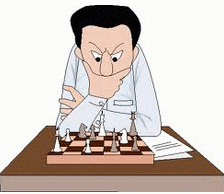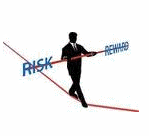MURDER SHE WROTE STARRING AAPL
There is an entire generation of cell phone and internet driven youth that has come of age watching the lurid filth that modern day television provides. Gone are the days of quality programming like Murder She Wrote starring Angela Lansbury. I have never watched a single episode of this show, as I preferred shows like Silver Spoons and reruns of CHIPs growing up in the 80s. However, flipping through all 12 channels of cable television, seeing Angela Lansbury sitting at her dimly lit desk, fingers clicking away on a typewriter, was an unavoidable and at the same time comforting consequence of my youth. I could wrap in a cool analogy at this point to firmly implant AAPL in some way, shape or form into either Angela Lansbury or the show she starred in. However, I will spare you that injustice. I simply liked the title and felt like typing a paragraph about 80s television programming. Now onto AAPL. If you will recall on January 23rd, I posted this chart outlining a target I had in mind for AAPL over the short to intermediate term, as well as the long-term. The price of AAPL was 514 at the close of the 23rd. However, I put this chart together after earnings had already been announced, with the stock trading somewhere around 470-480 afterhours. Here is a look at the chart posted on January 23rd, showing a short to intermediate term price target for AAPL of 400-420: It does seem that the lower end of that target (based on red trajectory) is in play. In fact, the trajectory currently sits at 390, which seems like a perfectly reasonable downside target. Breaking another round number, after plunging through 500 just a little over a month ago, will set up psychologically depressive havoc in the stock that may just be the proper formula for the process of bottoming to commence. Now notice, I did say the PROCESS of bottoming. And it will be process. In either case, whatever bounce we get starting in the next week or so will likely dissipate by mid-May. The bottom line is that the bearish side of the bet on AAPL is getting close to running its course. Downside from here is roughly 30 points give or take 10 either way. Upside over the next couple of months is 460, perhaps 480. Here is the technical look as of the close...
MARKET ANALYSIS AND PORTFOLIO MANAGEMENT: A MARRIAGE MADE IN HELL
In yesterday's posting of the February Monthly Performance Report, I touched on a subject that I believe deserves further exploration. There are two key tenets that create the foundation of the investment process, yet they are contradictory in nature when stripped down to their essence. Market analysis and portfolio management drive the investment process through analytic examination and management of risk that comes with attempting to extract extraordinary returns on capital. These two key tenets of the investment process are like water and oil, however. To the detriment of both the professional and retail investor, these two functions of the investment process are thought of as a singular entity. This pattern of thought in relation to analysis and management create a foundation for investors that is doomed to mediocrity and eventually complete ruin. In order to understand this concept, first we must look at what market participants deem as analysis. Analysis can fall into many categories: Technical, fundamental, macro, micro. And then there are the various sub-categories of each discipline. The methods used within these sub-categories is more or less endless. It is true that analysis of the markets can be tailored to the investors choosing. Much like religious beliefs, in the mind of believer, their method is superior to all others as it has been reinforced through study, examination and proof in the marketplace. The conflict between analysis and management of a portfolio is not rooted in the method of analysis, but rather the process. When the average or in fact, above average market participant begins their process of analytical study of a particular investment, a series of emotional triggers begins to take shape: 1. Value of time: We want to be compensated for our time put into any endeavor, whether through emotional gratification or monetary success. Attachment to a successful outcome as a result of this desire is the first result of the analytical process. 2. The desire to be proven right: The analytical process is nothing if not a stadium for ego to shine through perceived brilliance of analysis. That brilliance is proven through monetary success as a result of time, effort and methodology. Avoiding the pain of your time, effort and methodology being proven completely fruitless is the second result of the analytical process. 3. A sense of community: We naturally seek others who share our view. Whether with respect to politics, sports, hate, love or misery. We want to be connected through shared beliefs. An attachment to a community of those who share your analytical view further reinforces the process. 4. Mental illustrations: Prior to losing my virginity at the age of 16, I had mental...
THE TWO CHARTS OF THE S&P 500 THAT BULLS WANT TO RUN AWAY FROM
Unfortunately, it is impossible to run away from indisputable truth. That truth, in the markets, comes in the form of price. Price is the ultimate truth teller in this circus of lies. There is no clearer form of communication with investors. The great dilemma is that investors don't feel the need to learn the language of price. Instead choosing to bury themselves in data that is seemingly more intellectual and forthcoming than price, but fails to produce results. One can pontificate with overly-intellectualized jargon. It surely carries well at cocktail parties, as well as industry events. If you do it well enough it may lead to a book deal or a spot in the rotation at CNBC. This is, however, an industry that is bottom line based. None of us are here, as far as I know, to engage in pro-bono debate simply for the sake of debate. It is my hope that the overly-intellectualized jargon that is so commonplace on Wall Street actually serves as a means to an end. That end should be profit. It is the only reason any of us do this. That seems to get lost in the vast clouds of noise that overwhelms so many investors that can never get past...the noise. Below you will find two charts. The first chart is going to demonstrate what I call a recognition. The second chart is going to demonstrate what that recognition means for the market both in terms of upside and downside going forward. All truth. No jargon. With the sole purpose of enhancing portfolio performance. click chart to...
A KING-KONG CONVERGENCE OF RESISTANCE
King Kong is not a reference I make often or lightly. Therefore, it may be worth it to pay attention to this posting closely, as it could end up being what makes the difference between an investment portfolio that is glorious or heinous in the months ahead. As you all know, I participate in a form of technical analysis that only takes into account three factors: 1. Price - expansion and contraction of price ranges 2. Volume - expansion and contraction of volume ranges 3. Trajectory Points (more popularly known as trend lines, which I don't think is an appropriate label) - how price and volume reacts to trajectory points To put it in a more illustrative, vivid frame of a mind, think of price and volume as a suspected criminal. The trajectory point is the lie detector. How price and volume react to this lie detector tells the investigator (investor) all that he or she needs to know about the intentions of the stock, index, commodity or currency. There is a convergence taking place among the various leading indices with respect to generational (long-term) trajectory points that is fairly rare in nature. Of more concern is the fact that convergences between price and respective trajectory point is occurring as sentiment, according to various measures, is extremely comfortable with the current bullish landscape. When sentiment picks up a bullish head of steam, as it has over the past couple of months, paired with historically important levels of resistance that are being met across multiple important averages, the outcome is fairly predictable in nature. You can expect one of two outcomes to take place over the intermediate term: 1. A frustrating, sideways range that creates resentment and loathing among investors OR 2. A bearish trend that seeks to re-calibrate the bullish mindset through devastation of wealth In either case, the goal is the same: To create a dislocation in market psychology that yields the ammunition necessary to take on the convergence of technical resistance points we are currently facing. Very simply put, that ammunition doesn't exist currently. It never does when you have a majority of the shorts that are going to be squeezed out of the market and a majority of the investors that are willing to put money into stocks already well allocated. That is exactly where we are now. Investors are essentially facing a steel reinforced, 12 feet thick wall, armed only with toothbrushes and toilet paper. Here are the four key indices that are right up on King-Kong levels of resistance: click chart to...
THE MIND-NUMBING QUESTION OF THE MOMENT: WHAT NOW?
Yeah. What now? Two words that fit together so simply and elegantly. You can use these two words in an almost endless array of situations, from being stuck in a cave to during more intimate moments in the bedroom. In this case, the question of "What Now?" will simply refer to where we are in the markets with respect to time and price. There is nothing surprising about this move down, other than the persistence with which it refused to occur until Tuesday. There were numerous indications for a majority of the month that there would be sudden bearish consequences for the optimistic lethargy of the bulls. After all, the ease with which investors were dipping toes into the water sans sock, without fear of the predators that lurk just beneath the surface was disconcerting, at an absolute minimum. The market was in need of a re-calibration of sorts. Bringing us to the here now. The simple fact of the matter with respect to the here and now is that we are in a period of uncertain market movements. I have been attempting to convey this message for the entirety of February, most recently increasing portfolio cash position in addition to the TZA hedge I have maintained since February 5th. If you have ever frequented a poorly heated swimming pool during cold weather you will understand the following: The financial markets are very much like a poorly heated swimming pool in the winter. There are small spots of warm water close to the heated water jets and even smaller spots of heated water where your inconsiderate friends choose to urinate. In either case, the majority of the swimming pool is cold, unpleasant and makes you wish you had never taken a dip. Those who are intent on staying in the pool are forced to constantly find that small warm spot, not knowing whether they will be swimming in water or something much less pleasant. Those who have been around the block will be intent to wait for better weather to indulge their passion for swimming. It is cold right now and the market waters are poorly heated. There will always be a large contingency of investors who insist on swimming year round, regardless of the fact that their actions are primitive, futile and likely detrimental in nature. There will be a minority of investors who simply wait until warm weather arrives in order to avoid sparring with futility. The point here is obvious: There is no need to be 100% involved in the markets year round. Profits find those who are patient and diligent in their actions. Profits love those who...
THE ONLY WAY FOR INVESTORS TO COPE WITH A POTENTIALLY CONFUSING PERIOD AHEAD
There are decisions that will made within an investment portfolio during any given year that will determine whether you end up creating wealth for yourself or destroying it. The less decisions that are made, the greater the chances are that you won't get in the way of your own success. There are very few individual or professional investors who are able to create the mark they desire through rambunctious, often times unnecessary decision making. It is simply a waste of energy and resources when all is said and done. The decisions that are made within a responsible strategy will essentially come down to two actions: Adding risk or paring back risk. Of course, there are a myriad of ways to accomplish the act of adding risk to your portfolio or cutting back on risk. The intention of the action, rather than the details of what, how and why are equally, if not more important. It is, after all, in the intention that portfolio performance is born. If you have a reasonable strategy paired with the ability to execute consistently, your intention should deliver the results you desire. The details are just the after effects of the intention. It should be recognized then, as a responsible steward of your own wealth or your clients wealth, that the default intention should always lead to defense. There is no offensive path out of a situation that is confusing. Offense is not the answer to a loss. There is no offensive solution out of a black hole in a portfolio. In nearly every case of doubt, confusion, loss, indecisiveness, emotional decision making or crying in front of your monitor with your head in your hands (been there, done that) the answer will involve defense. Let me tell you why defense will always be the answer to any doubt or hardship you face in the market. Again, let's assume you approach the markets with a responsible strategy that you are able to execute on a consistent basis. Your expectations as a result of your intentions will be positive over the long run. You have a positive expected outcome, in other words. How positive depends on your skill and experience. For some it will be 200 basis points above the S&P 500, for others it will be 2000 basis points in excess of benchmark. The only thing that can get in the way of a positive expected outcome are inordinate losses. Inordinate losses are born out of situations where doubt, confusion, loss, indecisiveness, emotional decision making or crying in front of your monitor with your head in your hands takes place. In all of these cases, the default...
FLASHES OF PERCEIVED BRILLIANCE AND WHY I CAN’T STAND FEBRUARY
Some flashes of perceived brilliance that ran across my mind as I was doing my nightly research: - AAPL continues to have a sparkle of hesitancy in its eye that will likely create the great underperformer of 2013. There is simply nothing there that constitutes buying into the company other than fundamental speak that was equally as loud 100 points higher. - The BKX (Bank Index) is a bull's best friend right now. It is the index that looks the healthiest of all, with small-caps being a close second. Companies like BAC are moving up with little effort. Even more impressively, small and mid cap regional banks have joined the parade in a big way. It is something that looks like a long-term shift in the fate of the financials. Should be a leader for sometime to come. - One of the interesting correlations of this move up that started in November has been a strengthening Euro (FXE). The FXE suffered its sharpest pullback year to date recently. This is occurring right as major indices are hovering around important resistance points. Currencies/commodities do tend to lead equities. Keep an eye peeled at minimum. - I'm not sure why investors continue to be hung up on the gold and silver trade. It was cool a few years ago. It was super cool 13 years ago when Jim Cramer kicked Don Luskin off TheStreet.com for even suggesting gold as an investment. Gold was around $300 at that time. It may be cool again a few years from now. I don't think it will be cool in 2013. There are surely easier fish to fry. - There is a new small-cap investment candidate that I absolutely love and am willing to allocate substantially into. My only problem is the positioning of the market currently. I am willing to hold off on any allocation until the middle of the year in order to get a better price. Not to mention that the portfolios are essentially fully allocated currently. It is a retail name. I'll be putting out a research report over the next several months. No rush. - February thus far has been true to form. That form (for me, at least) is one of anguish and misery as the portfolios underperform in an act of defiance for being subjected to such a tasteless month of the year. February is miserable from every vantage point available. It is cold, first of all. Whatever short-term buzz is achieved from being in a new year wears off by the time February rolls around. Valentines Day was somehow inserted into this month to keep retailers from...
AT WHAT POINT DO YOU KNOW YOU ARE WRONG?
There isn't a position I take without being able to answer this question. It is a question that should be at the core of any investment or trade in any portfolio, regardless of experience or pedigree. Regardless of whether the position is a hedge, outright long, short or investment that you plan on holding for a decade. There is always a point when the original thesis that caused the investment to be taken will get blown out of the water. It is the job of every individual who gives a damn about wealth preservation to know that exact point. The mistake made by so many investors who choose to follow the fundamental creed without regard to price is that they can't give you an answer to this core question. The reason is that price leads fundamentals. By the time the reason for the decline in price morphs into tangible fundamental evidence of a problem, the stock has declined way past any reasonable point. It is the reason why few value investors make it through tried and true bear markets. The philosophy of buying into price declines that chew through every point of technical support, but are justified by valuation ratios that placate any concerns will eventually lead to fatal ruin. An anomalous period will come along that carries prices through concrete floors of value once thought impenetrable, burying investors under a suffocating ash of fundamental data that fails to quantify downside. It is the reason why you see that I have actual losses posted in well researched positions that have failed to move as expected. The opportunity cost and monetary cost of sticking with positions that move contrary to expectations is simply too great. The exact same philosophy applies to hedges that are initiated in the portfolios, similar to the hedge that was taken in TZA this past week. I know exactly what the market should do here in order for my hedge to be validated. If the market behaves contrary to my expectations, I will assume that my understanding of the situation is not as clear as I thought. If my understanding of any situation lacks clarity, I then lack reason to risk capital in that position. Here is what the market should do over the next 1-2 weeks according to my work: click chart to...
5 ELEGANT REASONS WHY THIS IS THE TIME TO HEDGE LONG EXPOSURE
I am neither a glutton for punishment or a sadist as many of those who frequent these parts seem to be. I do not believe in jumping around bull markets for fear of every dip, thinking I am smart enough to avoid any pain and brilliant enough to participate in only the pleasure. Bull markets should be left alone to create wealth in portfolio positions that have potential far beyond the opinion of any market pundit who cannot see outside of his or her grey box. There does come a time, however, in every bull market where overwhelming evidence combined with an undeniably well-defined risk/reward scenario makes taking the other side of the trade too irresistible. By taking the other side of the trade, I do not mean getting short to the point that I can recite the posts on ZeroHedge while waiting for the world to descend into Viking rule. I also do not mean liquidating any of the long positions that continue to have upside potential that is unrealized by the market. Both of these options are too froggy for my taste. Jumping around excessively is a sign of a lack of understanding regarding the structure of your portfolio and the markets as a whole. It may be time though to take a step back from an aggressively long position and hedge exposure to protect the gains that most investors seem to be sitting on early in 2013. I did just that at the close and a little bit afterhours, by initiating a hedge in TZA. The last time I put on a TZA hedge was on October 10th to a ringing chorus of boos and hisses from the studio audience. Most of you who have been following along know that I control risk in the portfolios in a 100% systematic manner. All of (or most) of the hedges I have put on over the past couple of years have been a result of the system spitting out an instruction and my following the orders regardless of opinion. This hedge, however, was not a result of my system. All of my trend indicators are still quite a bit away from turning to the bearish side, although they have started to deteriorate this week. Here are the reasons I am uncharacteristically early in initiating this hedge: 1. The 1520 area on the S&P has been something I have been discussing in the weekly reviews for a couple of weeks now. It was first mentioned on January 27th. And again this past Sunday. What I didn't have at that time was a reference as to whether the market saw this as an important inflection...
PROFESSIONAL WALL STREET AND PORTFOLIO MISMANAGEMENT 101
This market of ours. This enigma that disallows any real understanding of its intentions until it is ready to shape shift entirely. The endless puzzle that attracts hungry, testosterone driven individuals that want nothing more than to be on the winning side of the trade. Every. Single. Day. It has taken on a new shape recently, this market of ours. A grinding, relentless bull market that seems perfectly content in a near death defying tightrope walk 600 feet up in the air, while curious onlookers from both the bull and bear camps gasp every time it wobbles or twitches. For all that wobbling and twitching, the stuntman that has become the current bull market simply presses on until it reaches points unknown at a time unknown. It is none of any of our business to attempt to determine when the tightrope walker is going to plunge to his death by throwing money behind the idea that it will happen tomorrow or next week or next month. That act of taking a financial stake in the end of the walk up the tightrope misses the whole point of being involved in the act in the first place. That point is to, of course, profit to the maximum extent possible from such moves. Profitability doesn't occur by running away from the market at the first sign of an uptrend. Yet that's what a majority of those I have witnessed seem to be doing. Even the so called professionals, who eagerly pontificate about the markets on a daily basis, seem to have forgotten the fact that allowing profits to run without interference from all the sources of noise available to investors today is the key to building wealth for yourself and your clients. It is as fundamental and old school a concept as sandals and the crooked toes that go in them. But alas we must not forget that the current generation of market professionals has been conditioned, no differently than a circus monkey, to perform the trick of selling rallies at every opportunity. The average fund manager has forgotten that markets do trend because over the past 13 years that have gone absolutely nowhere. Too many times profits have turned to losses. Losses have turned into disasters. Whipping boys no more, an attitude of preservation through quick fingered execution of profit taking, hedging or selling short has replaced a more patient approach. I say poo poo on you average fund manager. Without two pounds of Suave firm hold styling gel, the leash you wear around your neck to display your subservience to the all mighty dollar and the deep voice you have...












